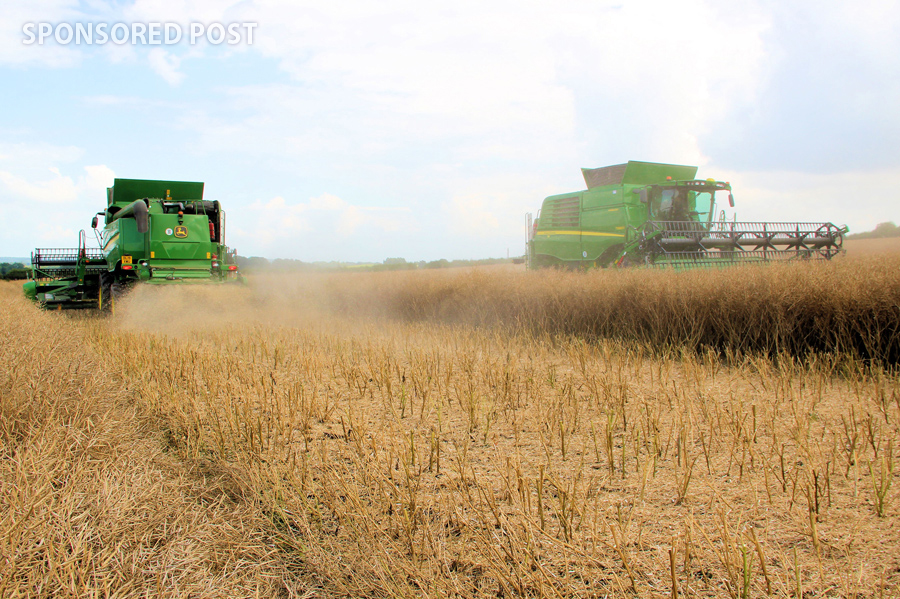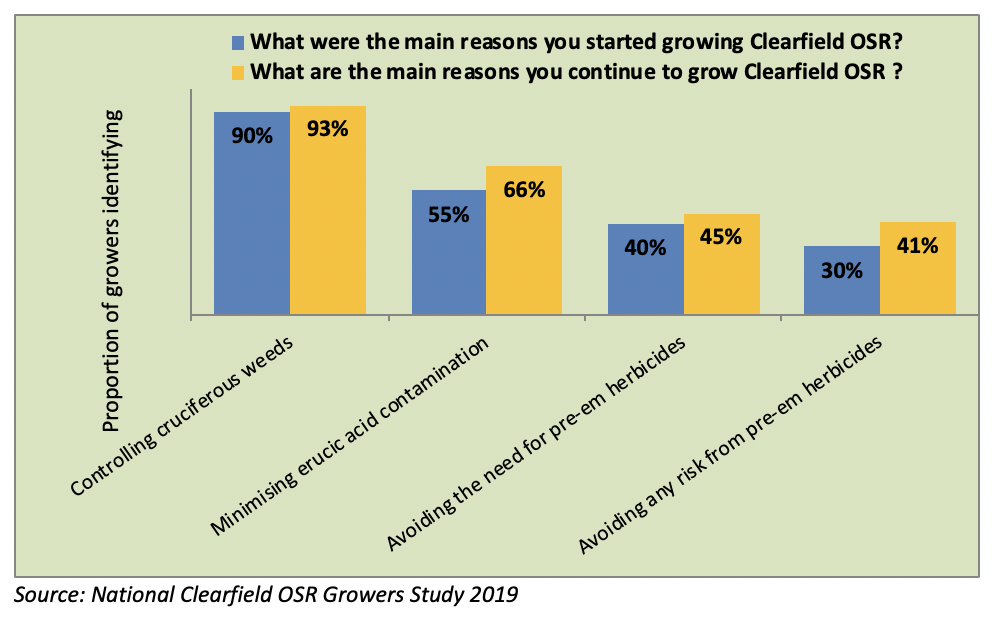Timely extra strength for Clearfield growers
20th May 2020
The arrival of a new generation of Clearfield varieties offering improved performance and reliability will be particularly welcome to growers needing to keep on top of cruciferous weeds and ensure the most robust establishment and early crop development this autumn.
The arrival of a new generation of Clearfield varieties offering improved performance and reliability will be particularly welcome to growers needing to keep on top of cruciferous weeds and ensure the most robust establishment and early crop development this autumn.
Topping the NIAB TAG Clearfield performance trials with a 2016-19 gross output rating of 112%, DK Imprint CL is a significant step forward from long-time grower favourite, DK Imperial CL. Indeed, it delivered a gross output almost 0.4t/ha ahead of the benchmark Clearfield variety at 4.88t/ha in the independent 2019 trial series.
“The RL candidate combines this impressive output advantage with vigorous establishment and a rapid speed of autumn leaf development as well as tolerance to SU residues,” points out Bayer’s Dekalb technical specialist, Richard Phillips.

Bayer’s Dekalb technical specialist, Richard Phillips.
“Double phoma resistance, good resistance to light leaf spot, strong standing power and reasonably early maturity protected by Dekalb pod shatter resistance make DK Imprint CL a variety without any of the compromises of previous Clearfield growing.
“Together with DK Impressario CL – also commercially available for the first time this season and carrying the same set of core Dekalb traits – we believe we have the best available Clearfield solution to today’s OSR-growing challenges.”
Frontier seed business development manager, Jim Knight now sees little practical performance difference between the newest Clearfield genetics and current non-CL farm favourites. At the same time, he finds they now are matching them for all-important agronomics like establishment vigour, speed of autumn and spring development, foliar disease resistance and standing power.
“With UK OSR plantings looking set to fall still further next season while demand remains firm, the 2021 crop should be especially marketable,” stresses Mr Knight. “So, wherever OSR can reliably be established, there is a strong argument for growers to plant it as widely as they can in the coming autumn.
“This includes ground that has been more challenging for rape-growing due to charlock, runch, hedge mustard or other problem weeds; persistent OSR volunteers presenting serious crop performance or quality risks; or the likelihood of sulfonylurea (SU) residues from late herbicide treated cereals. Which is where modern Clearfield growing offers the best solution.”
Agrii seed technical manager, David Leaper stresses that the best post-em broad-leaved weed control is especially important where the move away from pre-ems in OSR is accompanied by earlier drilling in the fight against flea beetle.
“Trial work clearly shows earlier drilling is associated with higher broad-leaved weed burdens, in general, and cruciferous weeds, in particular,” he reports.
“Weeds and OSR volunteers germinating from depth in dry conditions can be particularly problematic when they emerge ahead of the crop. And, we know from experience, that as well as compromising crop performance through competition, they can seriously interfere with its marketability through erucic acid contamination.
“When you add-in more open autumns and milder winters – not to mention taller stubbles and higher levels of surface trash employed to restrict flea beetle damage – you have a recipe for the increasing weed challenges we really don’t need in the crop, let alone rotation.”
Tolerance to SU residues will be a particular benefit of Clearfield rape in the coming season, adds Frontier break crop production specialist, Rob Nightingale.
“A lot of the coming autumn’s OSR is going to be drilled after late-drilled winter wheat or spring barley which have typically received late SU applications to deal with weeds that couldn’t be treated in the wet winter or have come late in the spring crop,” he warns.
“Many crops will be sown early in an attempt to combat flea beetle and with the minimum of cultivation to conserve moisture too, making them especially vulnerable to SU residues. And we’ve seen from trials and field experience just how much these can interfere with the early vigour so crucial to rape establishment these days.
“We need to be aware of the serious erucic acid contamination risk rape volunteers from the past continue to pose, too. Our work has shown a reduction in erucic acid levels from 5-7% to below 1% where Clearfield technology has been used.
“Also important here, is the extent to which volunteers increase populations, leading to thinner-stemmed plants especially vulnerable to flea beetle larvae as well as lodging – not to mention less efficient canopies harder and more costly to manage.”
For those including brassicas in nurse or companion crops, Mr Nightingale considers Clearfield rape an essential. The work he and his colleagues have done underlines the value NIAB trials have shown using them as a companion to dilute flea beetle grazing. However, he cautions that their competitiveness means they need to be effectively eliminated as soon as they have done their job; something that is only possible in a Clearfield crop – and one treated with a Clearfield herbicide early enough, at that.
Grower views
The best Clearfield varieties establish noticeably better than many non-CL crops grown alongside them and offer a range of valuable risk reduction benefits beyond cruciferous weed control, reveals the latest growers’ study.
Involving farms across the country growing more than 13,000ha of OSR, the 2019 study shows controlling cruciferous weeds remains a key driver behind Clearfield OSR growing. However, the proportion of growers seeing CL varieties as valuable in minimising the risk of erucic acid contamination from weeds and volunteers has increased sharply (Figure).
The system is also being increasingly valued for avoiding the need for herbicide use until the crops are safely established or any risk of pre-em herbicides interfering with establishment.
Figure: Reasons for Growing Clearfield OSR


